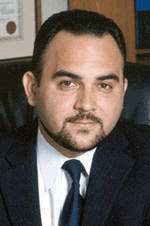By: John Krikorian
Consumer Crunch — Recession or Not?
As we approach 2008 there are signs from various sectors that will impact our economic, environmental, infrastructure and social fields that can cause a major financial upheaval for our cities, state and nation. At the same time we are experiencing the increasingly number of unskilled and undereducated illegal immigrants, especially in Southern California, that are draining our resources, from health to education. A major economic indicator is the production of homes in California that are continuing a downward trend, as homebuilders continue to take steps to reduce inventory before year-end and with the increased subprime mess with increases in home foreclosures giving us due cause for concern. Not to be overlooked is the record price of oil, reaching $100 per barrel and the dollar plunging, that is sending shock waves throughout along with the tightening of credit.
The entertainment industry being impacted by the Writers Guild walkout that has a direct impact on all of us, especially in Los Angeles County and our Tri-Cities is certainly not helping the situation. All factors that will be reducing revenue that fuel our state, county, cities and schools
Let us keep in mind the upcoming Presidential Election in November that will in one way or another add fuel to the negative signals that we are receiving.
The Conference Board Consumer Confidence Index, which has been declining since the summer, declined again in November. Sys Lynn Franco, Director of The Conference Board Consumer Research Center stated that: “This month’s deterioration in confidence was due primarily to the sharp decline in the Expectation Index, Consumers apprehension about the short-term outlook that is being fueled by volatility in financial markets, rising prices at the pump and the likelihood of larger home heating bills this winter
For a local view of the future, Business Life asked local officials, whose leadership influences our region, to discuss what they see from their vantage points. Except for minor editing for clarity and brevity, the offerings below are the presentation of the writers.
 Los Angeles County Economic Los Angeles County Economic
Development Corporation
Jack Kyser
Chief Economist
The economic outlook for 2008 will be unsettled, both nationally and locally. On the national front, there is unease over the financial industry. How much more bad news will there be from the subprime lending debacle, and will it impact the availability of credit to both business and consumers? In the meantime, the housing industry, both new construction and resale, will continue to struggle, with forecasts of recovery now pushed back to 2009. Worse, consumers will be coping with high gasoline prices. While this may seem a toxic brew, some economic sectors will continue to chug slowly forward. We are not calling a recession for the U.S. in 2008, but the economy will be walking a tightrope.
For Los Angeles County, the headline news will be the labor situation in the entertainment industry. Will the Writer’s strike be resolved? And then what about the Actors and Directors contracts? They expire in June, so there will be lots of uncertainty in this signature business sector. The County’s housing industry will also be struggling. Attention will be focused on the Antelope Valley where a lot of entry level housing was built. However, there is also concern over the condo and loft markets in Long Beach and downtown Los Angeles. Local government finance will be a growing concern over the course of 2008, with the County and cities looking at reduced revenue streams. Like the nation, some sectors will propel the County’s economy forward, including international trade, technology and tourism. Also, a host of large construction projects, both public and private, are underway that will provide support. Again, no recession call, but growth will be painfully slow.
What about the two valleys? The San Fernando Valley will be hurt by the labor problems in the entertainment industry. A lot of the independent contractors in the industry as well small suppliers will be struggling to recover from lost business. For the San Gabriel Valley, 2008 won’t be so unsettled. There will be slower growth, however, due to continued sluggish trends in international trade.
For both valleys, land use will need some attention. The San Fernando Valley has an industrial vacancy rate of 2.3% while it is only 1.9% in the San Gabriel Valley. This speaks to strong demand, but how can it be met?
 Economic Alliance of the Economic Alliance of the
San Fernando Valley
Bruce D. Ackerman
President and CEO
The San Fernando Valley is home to over 1.8 million people and more than 70,000 businesses.. As Dr. Dan Blake, director of the Economic Research Center at Cal State Northridge summed it up, “the Valley is a desirable place to be. We’ve shifted from being a bedroom community and large supplier of workers to jobs to being a job center with more jobs than working residents.”
Clearly, our economy is large, vibrant and expanding at a sustainable pace. Job creation is expected to rise 1.4 percent in 2008 and 1.0 percent in 2009, with lower growth rates forecast for Los Angeles County and the state economies. Our large professional and business services sector is expected to exceed 2.5 percent in 2008 and 2009 and the health sector is expected to surge to 3 percent and above in the next few years. The growing Valley economy still raises average wages and salaries providing decent gains in purchasing power for our workforce. Further, higher average salaries combined with expanding employment numbers will increase income for the area and subsequently, present a quality environment for local businesses to expand and develop.
As budgets tighten, the need and experience of effective collaborations has become, and will continue to be even more important, as well in the next year.
Millions of dollars have also been invested in our Valley medical care centers to meet the concern of our community for quality health care services. In particular, Kaiser Permanente, Providence Holy Cross Medical Center and Valley Presbyterian Hospital have all been invested in expansion projects and bringing greater service capabilities and state of the art medical technology to the region.
Of course, one of the most looming threats to our Valley economy is the current Writer’s Guild strike. Further concern for the motion picture studios and TV production companies, are contract negotiations with the Screen Actors Guild and the Directors Guild -- all within the next few months. As a result, this could be challenging for the many industry sectors that are directly impacted.
The Information sector—home to the Valley’s entertainment industry accounts for over 100,000 workers accounting for 15 percent of the Valley’s private sector workforce—more than any other sector. Entertainment supplies more than one out of seven of the Valley’s private sector jobs. Most of the State’s and County’s Motion Picture and Sound Recording industry activities are located in the Valley—making it truly an important industry in the overall well being of our economy.
For information visit www.economicalliance.org
 San Gabriel Valley San Gabriel Valley
Economic Partnership
Ron Wood
President
Each year the San Gabriel Valley Economic Partnership contracts with the Los Angeles Economic Development Corporation to conduct a San Gabriel Valley specific economic forecast research and analysis project. Having just completed this work for 2008 we are now able to share the full data with the community via our new regional website www.visitsangabrielvalley.com. San Gabriel Valley economic trends over the 2007-2008 time frame are generally favorable.
Here are a few highlights:
• Using total employment as a marker, the San Gabriel Valley should see growth of 0.8% in 2007 and 0.9% in 2008. Total payroll of workers should increase by 3.8% in 2007, easing to 3.5% in 2008.
• The largest number of new jobs in the Valley will be in retailing, which has a low annual wage of $27,716. Education and health services are next where the average annual wage is $39,947. As to job losses, manufacturing will shed 1,100 jobs during 2008, which is distressing due to a strong average wage of $43,206.
• Prospects for tourism look quite good. Pasadena is expanding its convention center, which in tandem with facilities at the Fairplex should boost the number of trade shows and business meetings.
• Professional & Business services are also quite positive. Accounting and legal services should continue to grow reflecting the fall-out from the sub-prime lending debacle. Scientific research & development is also set for continued brisk growth.
• The Valley’s population will see continued slow, steady growth with January 1, 2008 population forecast of 1,535,300 people in the incorporated cities. Unincorporated areas add at least another 230,000 people to the population number. This makes the Valley’s population comparable to the Las Vegas metro area.
• New homebuilding in the Valley will continue to decline through 2009, reflecting not only the turmoil in the overall homebuilding sector but also a shortage of land.
• The Valley’s nonresidential real estate market is quite healthy. At mid-2007, the office vacancy rate was 6.6% and headed down. Below the County’s 9.5% rate. The industrial market was even more robust, with a mid-2007 vacancy rate of 1.6%, and below the County average of 1.8%.
• Taxable retail sales will grow at a moderate pace through 2009. Sales in 2008 will increase by 5.7% to just over $18 billion.
For information visit www.valleyconnect.com
 Alameda Corridor-East Alameda Corridor-East
Construction Authority
Ernie Gutierrez,
Chair, Mayor, City of El Monte
Traffic relief is underway at the most congested railway crossings in the San Gabriel Valley. The Alameda Corridor-East Construction Authority (ACE) has completed construction of two grade separation projects, which eliminate railroad grade crossings by lowering roads under the tracks, as well as safety improvements at 39 crossings. Seven additional projects are under construction and will deliver relief in the Cities of Diamond Bar, El Monte, Industry, and Pomona. Ten additional grade separation projects will be possible with the local, state and federal funds ACE is now seeking.
Over the next year, ACE will meet a number of milestones:
• Open the Ramona Boulevard Grade Separation to traffic in the City of El Monte
• Open the East End Avenue Grade Separation to traffic in the City of Pomona
• Open the Brea Canyon Road Grade Separation to traffic in the Cities of Diamond Bar and Industry
• Award a contract to design a railroad trench and four street bridges in the City of San Gabriel
• Continue construction of the Sunset Avenue and Orange Avenue Grade Separations in the City of Industry
• Continue to acquire property in preparation for the Baldwin Avenue Grade Separation in the City of El Monte
• Award a contract for work needed to lay a fourth track for the Temple Ave. Train Diversion project in the City of Pomona
• Secure local, state and federal funding for another 10 grade separation projects
Grade separations eliminate the potential for collisions with trains, locomotive horn noise and delays for motorists and emergency responders while reducing air pollution in our region. On behalf of the ACE Project, we thank San Gabriel Valley residents and businesses for your continued support for this important project. For more information regarding the ACE project, please visit our website at www.theaceproject.org or call the ACE Helpline at (888) ACE-1426.
 Southern California Public Power Authority (SCPPA) Southern California Public Power Authority (SCPPA)
Bill D. Carnahan
Executive Director,
In 2008, the public power members of Southern California Public Power Authority (SCPPA) will continue to demonstrate environmental stewardship while providing reliable, reasonably priced power to their citizens in a cost effective and efficient manner.
SCPPA is a joint action agency created in 1980 by the public power systems in southern California to provide participation in electric generation facilities, high voltage transmission lines, renewable energy resources, acquisition of natural gas, and energy efficiency programs. The members include; the cities of Anaheim, Azusa, Banning, Burbank, Cerritos, Colton, Glendale, Los Angeles, Pasadena, Riverside, Vernon and the Imperial Irrigation District.
Our members are continuing to contract for, or construct, conventional generation to take care of the load growth and provide adequate reserves going forward. Virtually all have installed local, natural gas-fired peaking plants to provide local reliability to meet the peaks and back-up the wind projects when the wind is not blowing.
Both Riverside and Anaheim are in the process of constructing new peaking plants and Colton is studying the conversion of its peaking plant to base load gas fired.
Since the existing coal contracts at the Intermountain Power Project and the San Juan Generating Station, the projects the SCPPA members purchase from, do not expire until 2027 at the earliest, coal will be a part of the mix for sometime to come. By increasing efficiencies at the customer level through utility sponsored programs, increasing the use of renewables and a commitment for no new coal, the utilities will become "cleaner" over time and will be able to reduce back to 1990 levels while still having some coal in the generation mix.
The members have committed to address global warming and greenhouse gas issues in accordance with both SB 1368 and AB 32 passed by the Legislature and signed into law Governor Schwarzenegger. The SCPPA members intend to fully comply in accordance with the limits.
 Bob Hope Airport Bob Hope Airport
Dan Feger, Deputy Executive Director
The most important priority at Bob Hope Airport in 2008 is the completion of a baggage inspection/make-up facility required by the Transportation Security Administration (TSA) that will bring state-of-the-art electronic baggage screening to Terminal B.
This project will allow the inspection activity to move out of public space in the terminal to a secure area, thereby increasing public safety. Terminal A has had the newer screening system since 2005.
The TSA feels strongly about the need for this improvement and has committed over $2 million for the new scanning equipment, provided that the Airport can build the secure enclosure to house the scanner and the extensive in-line conveyor system needed to transport luggage efficiently away from the Terminal B check-in counter.
This is an extraordinary opportunity to improve security at Bob Hope Airport, and the Airport Authority intends to fast-track and fund the estimated $8-$10 million facility in time for the scanner delivery next summer.
Travelers in 2008 will also find new operational enhancements such as improved roadway access to and from the terminal. The main entrance to the airport at Hollywood Way has been realigned with Thornton Avenue, providing safer travel for vehicles at this busy intersection. There are now two left-turn lanes and a dedicated right-turn lane onto Hollywood Way to facilitate departing traffic, and a pedestrian walkway across Hollywood Way has been added to the north side of the intersection.
Customers using our popular valet parking will benefit from the newly opened Valet Parking Center that features improved drop-off and pick-up areas and improved transaction service in a new valet building.
The airport will undertake improvements to the Terminal A baggage claim area in the coming year, including replacement of baggage conveyors and numerous enhancements for passenger safety, convenience and aesthetics.
There is also a major improvement coming on the airfield in 2008. We expect to complete the construction of Taxiway D, which will improve runway safety by reducing the need for arriving aircraft to taxi on the active runway.
 Foothill Transit Foothill Transit
Executive Board
Paula Lantz, President
This past year, any hopes I had for gas prices going down have been continually dashed. If it’s not the oil supply that’s in jeopardy, it’s the refining process. If it’s not the refining process, it’s competition from emerging markets overseas, not to mention our own significant demand. Luckily, we do have choices that could help clean our air and keep us in the black.
Making a switch to public transportation isn’t always an easy one. It’s a lifestyle change where schedules and routes have to be coordinated ahead of time in order to maximize your commute. It means giving up some spontaneity and control. But it also means rarely filling up your tank and leaving the driving to someone else. If you add up parking, fuel, and maintenance costs, taking public transportation can save the average Los Angeles commuter over $300 a month.
As we head into 2008, we find those choices are less of an option. Rush hour now encompasses several hours on all of our main freeways. We’re shelling out more than we can afford for the comfort of a car. And if each person using public transportation means one less car on the road, won’t we all breathe a little easier? The solution seems right at our fingertips, and yet the investment in public transportation, despite demand, is being detoured at every turn. Now more than ever, agencies like Foothill Transit have to fight for every dollar in order to just maintain, not even grow, the much needed service we put on the street.
In November of this year, we approved a new fare increase because of rising costs in fuel and maintenance and depleted funding sources. This is just after approving a two-phase fare increase in 2005. If the trend in funding continues to back off investing in public services like Foothill Transit, and if costs continue their exponential rise, then there won’t be as many choices for gas-crunched commuters. Our challenge is to continue providing the quality transportation options our customers come to expect while the region struggles to pay for it.
 Glendale Adventist Medical Center Glendale Adventist Medical Center
Morre Dean
President and CEO
2007 was a year to remember for advances in healthcare for Glendale residents. With the opening of the new West Tower at Glendale Adventist Medical Center, the city of Glendale became home to one of the largest and newest hospitals in the region. More importantly, through this addition of beds and expansion of services, the community gained access to specialized teams and technology focused on advanced heart and neurological treatment options.
The coming year will mark more healthy advances for our ever-expanding community. GAMC is partnering with others to develop programs to help engage the community in efforts to provide healing and wellness for the whole person. For instance, we look forward to a 5K Downtown Dash, established in partnership with downtownglendale.com to support stroke services for the community. Currently, the Neuroscience Institute at GAMC is one of only two facilities in the Los Angeles area to provide all of the components of a primary stroke center.
Named one of the Best Places to Work in Los Angeles County, GAMC is proud to continue expanding for the future, providing quality patient-focused care with medical expertise often only found in larger regional medical centers. 2008 will undoubtedly see more pressure for smart expansion of health services for the community – whether it is through investment in new technology or new physicians, we are committed to always providing our neighbors with healthcare at a higher level.
As one of the hospitals in Glendale, we are blessed to be supported by our community and look forward to another hundred years of providing quality health for the whole person.
 City of Alhambra City of Alhambra
Julio Fuentes
City Manager
The City of Alhambra celebrated the start of 2008 on a rosy note, after learning the results of a Community Opinion Survey conducted in 2007, which revealed a 90% satisfaction rating among residents and businesses pertaining to city programs, services and facilities (up from 86.6% in 2002).
While national economic woes have slowed the pace of development, two sizeable projects are pegged to move forward in 2008. One of these is a commercial retail center on Main Street to be constructed by the Panattoni Development Company on a 3.2-acre site formerly occupied by a GMC dealer. Final lease negotiations are in progress with Circuit City for a 20,152 SF store, and with Fresh & Easy, a grocery concept out of Great Britain that is catching on here in the States. Additional smaller retailers and quick serve restaurants are planned along with possible bank. Second, a mixed-use project at Third and Main Streets calls for 94 residential units combined with 5,000 SF of commercial space, per the site master plan. A qualified developer is currently being sought for this project.
When the economy picks up again, two additional downtown mixed-use projects are “waiting in the wings.” One is planned for the southeast corner of Fourth & Main, providing 144 units of residential housing and 11,000 SF of commercial space, while the other (replacing Alhambra Place at Garfield & Main) calls for 140,000 SF of commercial space, including 100,500 SF of retail space, 21,500 SF of restaurant space and 244 units of residential housing.
Construction is well underway on the new $30 million 45,000 sq. ft. Civic Center Library located adjacent to City Hall, which will include underground parking for library patrons, City Hall visitors and employees, as well as downtown businesses. A new $13 million Groundwater Treatment Center at Mission and Granada is also nearing completion; both projects are slated to begin operations at their new locations in 2008. Another project, the Gateway Plaza at the corner of Valley & Fremont, is expected to get underway in 2008 if project funding is allocated as expected.
Once completed, the next phase of the "community within a community" concept will get underway—a $189 million, 10.5-acre, 351 residential condominium project.
Alhambra continues to make haste with other projects, ranging from simple painting and landscaping to major road improvement projects on Fremont Avenue and Shorb Street, and another on Atlantic Boulevard, south of Main to Glendon Way, which is slated to begin soon. And, last but not least, negotiations are in the works for a new lineup of star entertainers for our popular Summer Jubilee event, which has proven to be a tremendous promotion tool for our downtown businesses!
 City of Burbank City of Burbank
Mary Alvord;
City Manager
Burbank has much to give thanks for in 2007 and next year promises to also be a year of progress, achievement and success. Burbank is set to continue our focus on building a healthy, sustainable community and we are on track with continued efforts to enhance our quality of life for years to come.
From a City infrastructure perspective, 2007 ushered in the completion of the South San Fernando street beautification project, breathing new life and vitality to an important and evolving area where the Burbank Redevelopment Agency has invested more than $20,000,000. In 2007 nearly 90% of construction of the 2.2 mile Burbank Boulevard corridor street beautification project has been completed and the construction began on Ovrom Park. This new park located on South San Fernando Boulevard between Providencia and Cedar Avenues will feature a new community building and public art piece. Ovrom Park will address the council goals of enhancing and improving the sense of community and high quality of life, as well as enhancing the high level of leisure opportunities available to Burbank residents.
The City continues to address workforce housing needs with new infill housing, particularly near our Downtown Burbank transit hub served by Metrolink, MTA bus and local shuttle systems. As such, the city of Burbank, with its skilled and specialized workforce, has an unemployment rate of 4.1%, compared to the state rate of 5.6%.
In 2007, the City itself began construction of a new LEED-certified public facility for municipal Community Services. This project, just a few blocks from the Downtown Station, is an environmentally smart development that demonstrates the commitment of the Burbank City Council to preserving natural resources and sustainable development
In Magnolia Park, the implementation of the Property Based Business Improvement District (P-BID) is bringing about the transformation of the Magnolia Park area into a hip place.
As the “Media Capital of the World”, Burbank has an economic climate that continues to build on its powerful base of sophisticated digital and broadband technological companies.
In 2008, Burbank will continue working to attract quality business, development and jobs to the City while preserving, sustaining and improving the high quality of life. One example of a development that will be completed in 2008 is “The Collection”. This mixed-use residential and retail project being developed by Champion Development is located in Downtown Burbank adjacent to the AMC Theaters. With over 40,000 square feet of retail space on the ground level and 118 for-sale condominiums above, the project brings more housing, more shopping and 276 spaces of additional public parking to Downtown.
With Burbank’s growing commitment to creating a more sustainable and healthy environment, the public is also beginning to experience the benefits of the City’s new “Shopping Cart Containment Ordinance” and the City’s “Green Building and Sustainable Architecture Standards”. Furthermore, as part of the City Council’s renewed commitment to the environment by expanding resident and business ridership on the BurbankBus, the Council authorized the purchase of five new CNG busses and a new Hydrogen Hybrid Transit Bus to serve riders throughout Burbank.
 City of Glendale City of Glendale
Jim Starbird
City Manager
As Glendale enters 2008, the local economy remains dynamic. The downtown business district will be bustling as we complete the Americana at Brand, a 15.5 acre destination lifestyle center. This project includes 338 housing units, 475,000 square feet of retail, restaurants, and a state-of-the-art 18 screen movie theater. The Embassy Suites hotel (272 rooms) will also open in the spring. Several additional hotels, as well as major mixed use developments, will be readied for construction in 2008.
Parks and Libraries will be a major focus for Glendale. Our Parks Department continues an aggressive program of new park development which includes renovation of the Adult Recreation Center and exploring opportunities for the development of aquatics facilities. A much-anticipated branch library in the historic Adams Square District will be completed in 2008. This innovative project, along with the recently completed Adams Square Mini-Park, adds to the vibrancy of this important Glendale neighborhood.
Our City-owned utility, Glendale Water and Power (GWP), will continue its role as a reliable anchor for public services. Major system up-grades to the electrical distribution system will continue in the New Year. We will continue to expand and improve our recycled water systems as one of many steps to address the recent drought conditions Southern California is experiencing. Our energy conservation programs will be of great value to the community in the coming years.
Glendale is consistently ranked as one of the ten safest cities in America (FBI statistics). In 2008 we’ll continue to focus on recruiting and training the finest new Police officers available. Our Fire Department will train and hire a new class of Fire Fighters. Having a well-trained and equipped Fire Department will ensure that we maintain community safety and our highly regarded National Class -1 rating.
Our residential neighborhoods are some of the finest in Southern California. In 2008 we will continue to update codes and land-use policies to ensure we maintain our high quality of life while promoting thoughtful and well-managed growth. These efforts, and numerous others, will ensure our City’s continued success in 2008.
 City of Monrovia City of Monrovia
Scott Ochoa
City Manager
The uncertainty of the economy – coupled with the State’s financial shortfall and its possible local consequences – would cast a relatively dark shadow over 2088 were it not for the momentum our community has built up over the past five years.
Monrovia is moving ahead with major new developments, as well as quality of life improvements, that will add sustainable gains even in the face of a possible economic downturn. While revenues may tighten in the short-run, our diversified commercial sector and a healthy balance of sales and property taxes should continue to keep things running and still fuel both new jobs and housing through the year.
There is good reason for that optimism, thanks in good part to Monrovia’s habit of consistently reinvesting in itself.
Our long-planned infrastructure improvements have either been completed now or are set to go – from a rehabilitated fire station and remodeled City Yard to a new Public Library and major streetscape and utility improvements in Old Town. One new mixed-used housing development is about to open and another is set for groundbreaking next summer.
The first phase of the 80-acre Station Square transit village project is expected to take a giant leap toward development early in the year, while smaller, single-family home development is still dotting neighborhoods in the southern part of the community where such investment has been sorely needed.
In 2007, Monrovia’s City Council wisely adopted a set of environmental accords, setting ambitious goals for conserving water and energy, cutting waste and encouraging sustainable, environmentally-friendly construction. Many of the programs that will be needed to create and sustain that community vision will be put into place in 2008.
We continue, too, to invest in people, from the Monrovia Area Partnership (MAP) program that puts resources and services directly into the hands of homeowners in less advantaged neighborhoods, to the Mayor and City Council’s Youth Employment Service (YES), helping Monrovia’s at-risk youth onto a path of post-secondary education and new career opportunities.
All of these investments will continue to pay dividends through this coming year, regardless of the financial bumps that might lie along the way.
 City of Pasadena City of Pasadena
Bernard K. Melekian
Interim City Manager
Rose bowl stadium is on the road to financial stability. The 85-year-old Rose Bowl Stadium, visited by people from throughout the region, the nation and the world, is a city of Pasadena-owned enterprise that holds about 100 events annually including the Rose Bowl Game, UCLA Bruin Football, other sporting events, major concerts and the world’s largest flea market.
As an appointee to the Rose Bowl Operating Company (RBOC) Board, I am mindful of the board’s mission to return economic and civic value to the city of Pasadena by managing the stadium and the Brookside Golf Course complex.
For many years the future of the stadium was in question. A proposal to bring a National Football League team to Pasadena – complete with funding for a major expansion – was defeated by voters; and preservationists were concerned about the stadium’s status on the National Register of Historic Places if radical changes were made to the structure.
Following the defeat of the NFL initiative, the RBOC rolled out a strategic plan for improvements that will help sustain the stadium long into the future, including wider entry tunnels and aisles, better seating, a new scoreboard and much more. Utmost priority is given to public safety issues, historic preservation concerns and the ability to remain competitive in the Los Angeles sports market. .
There is no question that the Rose Bowl Stadium must be upgraded if it is to survive. The RBOC is working very hard to ensure that the stadium can be of economic value to the community and the region. To that end the Pasadena City Council recently appropriated an additional $220,000 for work related to architectural and financial components of the plan.
The stadium has operated at a net loss for many years and relies on subsidies from Brookside Golf Course revenues. The RBOC is identifying corporate and private sponsors to help fund the improvements, as well as potential public/private partnerships, foundation grants and surcharges to ensure that losses do not continue once renovations are completed. Financial analyses are being prepared to identify such opportunities.
It is in the best interest of the Pasadena community and the entire economic region for the Rose Bowl Stadium to not only survive, but to thrive. I invite you to learn about the project by visiting www.rosebowlstadium.com and clicking on Rose Bowl Strategic Plan.


|